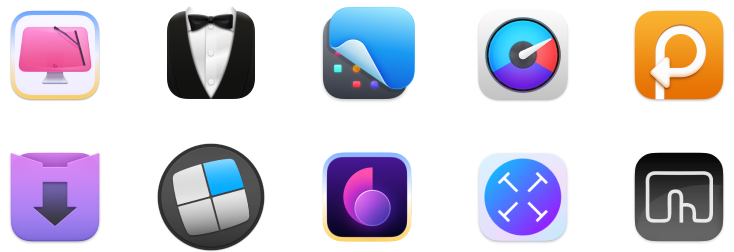How to reinstall macOS [Without messing up your data]
Does your Mac often run slowly, restart all of a sudden, or has some apps crashing for no reason? You may have a faulty operating system and reinstalling macOS may be the magic fix your laptop needs.
But why is that? Well, reinstalling basically helps you get rid of software problems that may be consuming CPU power or just repair broken code that makes your laptop not run efficiently.
But regardless of the problem, I will walk you through all you need to know about how to reinstall macOS and get your laptop running like new.
Preparing your Mac for reinstallation
Reinstalling your Mac’s operating system is a huge deal, and like any big event, you need to prepare. So, this involves backing up your precious files, deleting files that may slow your CPU, and even checking whether the OS you’re about to install is compatible with your current Mac.
Let me explain in more detail.
Back-up your data
If you’re like me that use your laptop for work and play, then you most likely have some important files, photos, and documents stored on your Mac. If they’re unrecoverable, like personal diaries or photos, then you need to back them up on an external drive or the cloud.
Why is this important? Reinstalling macOS can have unexpected failures that may destroy your files. So backing up your files keeps them protected in case an incorrect reinstallation corrupts them.
One recommended tool that Apple and many technicians use is Time Machine, which is also a built-in backup feature. This software allows you to back up your Mac and then recover that saved data after the update or whenever you need it.
While Apple’s Time Machine is reliable, it isn’t seamless and many do find it cumbersome. For me, I recommend Get Backup Pro since it makes saving my files elsewhere as easy as just a few clicks. First, it lets me easily back up separate files and folders. Second, it creates bootable backups. This means you can reboot your Mac from the last update, which can be super useful if the macOS reinstallation has some issues.
Here’s how to back up your files with Get Backup Pro:
- Download and open Get Backup Pro.
- Press + in the lower left corner to create a backup project and specify the settings.
- Press File+ or Apps+ to choose files to back up.
- Select the location for backup. I recommend an external hard drive.
- Press Play button to start the backup process.
Check your Mac’s compatibility
Just as you can’t expect the latest iOS 18 update to work on an iPhone 6, the same applies to your Mac and the macOS version you’re installing.
For example, the macOS 14 Sonoma (2023) is only compatible with Mac models made in 2018 and after (the only exception is iMac Pro, 2017). Check out this list of the latest macOSs and the Macs they are compatible with.
You can find your macOS name and the Mac release year by clicking on the Apple logo in the left corner of your screen and selecting About This Mac.

Clean your Mac with CleanMyMac X
Sometimes, you need to wipe off unwanted files and programs from your computer before you reload macOS. This ensures stuff like malware, junk files, and cumbersome cache don’t slow down your system even after you reinstall the operating system.
In this case, CleanMyMac X is the handy tool I recommend as it helps optimize any Mac system by removing unwanted files and programs, and also helps manage large & old files.
Below are two simple steps on how to use CleanMyMac X:
- Download and open CleanMyMac X.
- Click Smart Scan for an overall scan of your system.
- Review the scan summary and unselect what you don’t want removed. I usually delete everything mercilessly because the app only finds the trash.
- After reviewing, click Run to optimize your Mac
Note that you can specify the scan type. For example, Malware Removal will detect and remove malicious apps, while System Junk will remove unnecessary files that bloat your system.
Reinstall macOS on an Intel Mac

Let me break it down into steps that are easy to follow.
Step 1: Restart your Mac.
Step 2. Once you see the Startup screen, quickly press and hold the following key combination until you see the Apple logo:
Command key + R: This will reinstall the latest version of macOS that is currently running on your system.
Option key + Command key + R: This will upgrade your macOS to the latest version available for your system. Note that it will require an internet connection.
Option key + Shift key + Command key + R: It also starts up from macOS Recovery over the internet and lets you reinstall the version of macOS that came with your Mac or the closest version that’s still available.
Step 3: Enter your laptop’s password if you see a lock.
Step 4: If asked for, pick an administrator account, click Next, then enter the account password and continue.
Step 5: You’ll be taken to the Utility screen where you can either restore the previous Time Machine backup or reinstall macOS.
The reinstallation process may take an hour or more depending on the Mac you’re using.
Reinstall macOS on an Apple Silicon Mac
Reinstalling macOS on an Apple silicon Mac is just as easy as installing macOS on an Intel Mac. Here’s what you need to know:
Step 1: Shutdown your Mac then press and hold the power button to enter Recovery Mode.
Step 2: Pick Reinstall for your macOS release, then select Continue.
Step 3: After following the on-screen guide, you’ll reach the settings where you select your macOS volume. In this case, just select your current macOS version – it’s often the only option available.
Reinstalling macOS without losing data
Reinstalling macOS through recovery mode doesn’t delete your data, but an error can stop the installation and corrupt your precious files. To prevent this from happening to your data during the reinstallation process, the best option is to back everything up.
I recommend using Get Backup Pro for bootable compressed backups, and especially if you need to back up separate files and folders.
But what if you delete a file by mistake, or it randomly goes missing before or after the macOS installation? For such a situation, I use Disk Drill, which is a powerful data-retrieval tool that allows users to easily recover erased files.
To recover files with Disk Drill, follow the steps:
- Install DiskDrill.
- Open the app and scan your drive for deleted files.
- Choose the files you want to be recovered after the scan.
Ultimately, Disk Drill is a life-saver since it makes sure you don’t lose precious files or spend hours and gigabytes getting them back. It’s magic!

Use these tools to make reinstalling macOS easier
Learning how to reinstall macOS from scratch can give your Mac a new lease of life, solve many problems, and increase performance. But before you reinstall OS on Mac, ensure to back up your data, confirm your system’s compatibility with the OS, and install according to your processor type.
With the tips I’ve given in this guide, you can easily fix your Mac and make it feel as good as new. If you’re interested in my top tools for safeguarding data or speeding up system, they are: Get Backup Pro, CleanMyMac X and Disk Drill. These are available on Setapp with a 7-day free trial period.
FAQ:
How do I reinstall macOS after installing Windows?
To reinstall macOS over Windows:
Reboot your Mac.
Press and hold Command + R as it turns on.
While on the macOS Utilities screen, wipe the Windows partition with the help of Disk Utility.
Choose reinstall macOS.
After choosing to reinstall macOS, you will receive additional prompts, such as a request to insert your password.
Will reinstalling macOS erase everything?
Reinstalling macOS using macOS Recovery is safe and does not delete your apps or personal data. However, it’s recommended to back up your files in case an installation error corrupts your data.
Why is reinstall macOS not working?
Before you consider reinstalling macOS, first check for a stable internet connection. Also, make sure you’re correctly entering Recovery mode and the macOS you’re trying to install is compatible with your system. If this persists, try an NVRAM reset or contact Apple Support for assistance.
Why you should reinstall macOS?
Reinstalling will solve software issues in the system, increasing its speed and saving it from future breakdowns. This way it becomes more powerful, especially when one needs to sell his or her Mac, remove malware from a computer, or deal with software problems that are beyond repairs.





